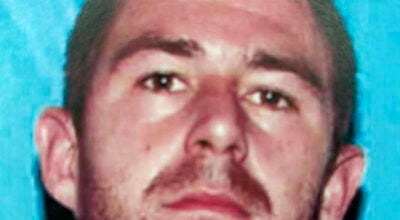Appeals court affirms convictions of Davis, Saltzman
Published 7:40 am Wednesday, October 23, 2013
The 3rd Circuit Court of Appeal has upheld the convictions of two women found guilty of killing one of their husbands in 2009.
Robyn Little Davis and Carol Noland Saltzman were convicted of second-degree murder in the 2011 death of Brian Davis, whose body was found on Wagon Wheel Lane in Big Lake.
The 3rd Circuit released its ruling Wednesday.
Prosecutors said the women lured Brian to the rural area and shot him four times. A gun was never found, and prosecutors used circumstantial evidence to tie the women to the crime. Jurors voted 11-1 to convict the women at the end of a 13-day trial.
Glen Vamvoras and Shane Hinch, defense attorneys for the women, asked the appeals court to overturn the conviction, listing nine errors, including insufficiency of evidence and a continuance granted after a witness’s testimony had been perpetuated and a jury had been chosen but not sworn in.
A three-judge panel of John D. Saunders, Jimmie C. Peters and John E. Conery heard oral arguments from Vamvoras and Hinch, as well as from prosecutor Carla Sigler. Saunders wrote a 78-page opinion, and Peters affirmed the conviction. Conery dissented.
Prosecutor Rick Bryant said cellphone records placed the women in the area of the murder and did not support their stories. He said most important to the case was the timeline, which he said showed “clearly and convincingly” that Robyn Davis was the only person who could have committed the crime.
“We’ve always felt that everything that happened in that trial was done properly, legally, procedurally correct,” Bryant said.
“We thought it was a very difficult case. The fact scenario, obviously, and the circumstantial evidence case are very difficult. But we felt not only were the facts strong enough to support the conviction, but Judge (David) Ritchie and everything that was done in this case was done appropriately and this is a confirmation of that.”
Hinch and Vamvoras said they plan to take a writ to the Supreme Court. Vamvoras said that during oral arguments the judges “seemed to be very disturbed with what happened at the trial court level and it gave us a false sense that ‘Hey, we’re going to get relief here.’
“Only Judge Conery seemed to stand his ground there. Thank goodness his opinion is well-written, supported by the record and maybe it will make the Supreme Court want to take a look at this.”
“I’m flabbergasted because with all the issues we had and the questions from the judges at the 3rd Circuit, I really expected it to go a little bit differently,” Hinch said. “However, I’m a realist and was not terribly surprised that it worked out 2-1. I was not surprised that Judge Conery dissented.”
Evidence placed Robyn with Brian shortly before the murder; showed that Robyn was the beneficiary of more than $645,000 in life insurance; that she knew Brian had had an affair; and that both she and Saltzman had lost their jobs, Saunders said.
Saunders said there were inconsistencies in the women’s stories, and evidence that Robyn told Brian’s sister that Brian never returned from a trip to Kroger to buy a Sprite, while she told another person that he never returned home from work, and evidence that the tire was not defective.
“Accordingly, we find that considering the direct and circumstantial evidence in this case, the jury reasonably rejected the Defendants’ hypotheses of innocence, including any possibility that someone other than the Defendants committed the murder,” Saunders wrote.
Failed to swear in jury
Jury selection began on Nov. 7, 2011, and was completed three days later. During that time, the testimony of Roxanne Baumgarten was videotaped because of a conflict during the trial.
On Nov. 11, 2011, Judge David Ritchie granted the state a continuance because prosecutor Rick Bryant had health problems. He also denied a request by the defense to swear in the jury.
When the case resumed in April 2012, the original jurors were summoned, but ultimately a new panel was chosen.
Vamvoras and Hinch argued that double jeopardy attached when a continuance was granted after Baumgarten’s testimony was taken.
“Double jeopardy does not attach in a jury trial until the jury is sworn together to try the case,” Saunders said.
Additional DNA testing was done before the case was taken up again, which Saunders said “actually benefitted” Davis and Saltzman because no female DNA was found on items recovered at the scene. Davis and Saltzman failed to show prejudice, Saunders said.
In his dissent, Conery focused on the section of the state Code of Criminal Procedure that reads, “The jurors shall then be sworn together to try the case.”
“ ‘Shall’ means that it is mandatory. ‘Then’ means right away, not five and a half months later,” Conery said. He said Davis and Saltzman should be granted a new trial because the continuance prejudiced them.
“A jury trial commences after the first juror is sworn,” Conery wrote. “Clearly, the continuance granted in this case was improper, as all twelve jurors and two alternates had been individually sworn.”
The state was able to conduct additional DNA testing and withdraw the evidence introduced during Baumgarten’s testimony, he said. The additional DNA test results were not provided to the defense before the trial, Conery said.
“In effect, the State was allowed to start all over, allegedly plugging the holes in its case that had been discovered when defendants had vigorously cross examined Officer Baumgarten during her ‘perpetuated’ video testimony,” Conery wrote.
Robyn Little Davis. (American Press Archives)
Carol Noland Saltzman




